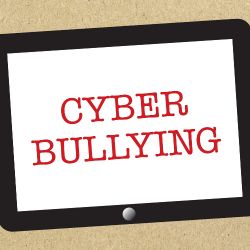What would you do if a child strutted up to your child on the school playground and started pummelling him violently? Would you stand idly by as you witnessed your child crying out in pain, and then, unable to defend himself adequately, curling up into a foetal position as the bully continued his assault on your child? I’d wager that your answer is a resounding NO!
As adults, we are charged with protecting children and empowering them to protect themselves. This is a responsibility that we at Leave No Girl Behind International take seriously – part of our efforts to stop bullying is through having every participant in our LNGB Power Circles take a pledge to respect fellow Power Circle members and to ensure that they are part of creating a safe space for the group. Our Cultural Diversity Program teaches about embracing, learning from and appreciating the differences among children worldwide while recognising the commonality of being global citizens.
Our responsibilities as adults include recognising all the different forms of bullying and giving credence to the fact that verbal and cyberbullying are just as damaging as physical bullying. 1 This means negating the adage that many of us were raised with -“sticks and stones will break your bones but words will never harm you”.
The truth is that many parents of our generation did not grow up with the internet – there is no set of rules to follow; with online dangers such as cyberbullying, many parents are in unchartered territory.
What is cyberbullying?
“Cyberbullying” takes place when a child or adolescent is threatened, harassed, humiliated or otherwise taunted by another child or adolescent using the internet. Since over 80% of teenagers use a cell phone regularly, this is the most common medium for cyberbullying.2
Bullies harass others in a face-to-face setting. Cyberbullies harass others online from behind a computer screen where they can remain anonymous and faceless. No matter which form the bullying takes, it has damaging effects and should be taken seriously.
5 Facts you should know about cyberbullying:
- 70% of students report seeing frequent bullying online.3
- About 75% of students admit they have visited a website bashing another student.4
- Only 1 in 10 victims will inform a parent or trusted adult of their abuse.5
- 81% of young people think bullying online is easier to get away with than bullying in person.6
- Over 50% of young people see cyberbullying as worse than face-to-face bullying.7
Who becomes a target for cyberbullying?
There is no particular profile for the target of a cyberbully. Children and adolescents of all ages, races, genders and backgrounds can become targets.
Has your child ever cyberbullied another child?
This is a hard pill to swallow, but education is key. Many children who are cyberbullies or who support the cyberbullying may not realise the consequences of their actions. Educate your children about the fact that 1 in 10 kids who have been cyberbullied attempt suicide.8
How we can empower children and prevent cyberbullying:
- Teach your children social skills and the skill of building solid friendships in the real world. Get them involved in the LNGB Youth Cultural Diversity Program or LNGB Power Circles where they are taught to embrace diversity instead of criticising or fearing it.
- Limit your child’s time on social media – the lesson for them here is that the phone/computer is not the centre of their world, nor are the opinions and words of unknown participants in the social media world.
- Teach your children about what precautions to take when posting on social media (see Articles for 11 years and up, Cyberbullying).
- Talk to your children about cyberbullying – what it means, how to recognise it, how to deal with being cyberbullied and the untold harm that cyberbullying may cause.
- Teach your child how to stand up and help anyone who is being cyberbullied.
- Empower your children to know that they are strong, capable and worthy – that no one’s opinion about them counts more than their own opinion about themselves.
1“One in five SA Teens Cyberbullied”, September 23, 2015, http://www.itweb.co.za/index.php?option=com_content&view=article&id=146442
2 Connolly, Ciaran. “Facts About Cyber Bullying” No Bullying Expert Advice On Cyber Bullying School Bullying. Accessed February 10, 2014, http://nobullying.com/facts-about-cyber-bullying/.
3 Graham, PhD, Sandra. “Bullying: A Module for Teachers.” Accessed February 10, 2014, http://www.apa.org. http://www.apa.org/education/k12/bullying.aspx#
4 Connolly, Ciaran. “Facts About Cyber Bullying” No Bullying Expert Advice On Cyber Bullying School Bullying. Accessed February 10, 2014. http://nobullying.com/facts-about-cyber-bullying/
5Connolly, Ciaran. “Facts About Cyber Bullying” No Bullying Expert Advice On Cyber Bullying School Bullying. Accessed February 10, 2014, http://nobullying.com/facts-about-cyber-bullying/
6 “Teen Online & Wireless Safety Survey.” Cox Communications. Accessed February 14, 2014, http://ww2.cox.com/wcm/en/aboutus/datasheet/takecharge/2009-teen-survey.pdf?campcode=takecharge-research-link_2009-teen-survey_0511.
7 “One in five SA Teens Cyberbullied”, September 23, 2015, http://www.itweb.co.za/index.php?option=com_content&view=article&id=146442
8 “Cyberbullying rampant on the internet”, 2013, http://www.cyberbullyhotline.com/07-10-12-scourge.html

